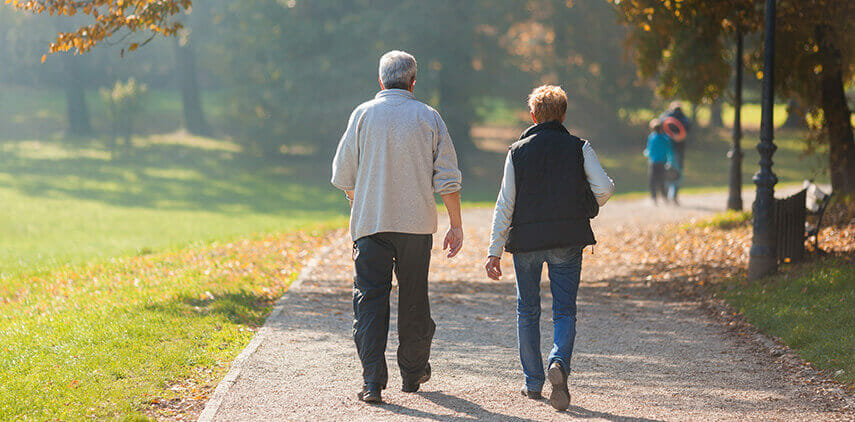Exercising regularly offers a healthy balance of physical, mental, and spiritual well-being – but did you know that it can also help improve your environmental health?
That’s right: Exercise doesn’t just benefit us on the inside but helps us become more environmentally conscious citizens.
From improving air quality to reducing water and energy consumption, regular physical activity can make a huge difference when it comes to protecting and preserving our environment.
In this blog post, we’ll explore how Exercise positively influences the external world, so buckle up and get ready for some exciting findings.
How does physical activity affect the environment?
Physical activity affects the environment in a variety of ways. While physical health is often improved with physical activity, making positive contributions to the environment can also be achieved.
Increased physical activity can reduce pollution and encourage better air quality. Below I’ll explore some physical activities that can affect the environment.
Physical Activity & Environment
Physical activity is an important part of a healthy lifestyle, but how does it affect the environment? This article will discuss physical activity’s positive and negative environmental impacts.
When someone exercises outdoors, they can reduce their carbon footprint by not relying on vehicles to get around.
This is beneficial for air quality, as fewer pollutants are released into the atmosphere. Additionally, when people are active outdoors in nature, they have more opportunities to practice responsible environmental habits such as recycling or picking up trash from public spaces.
However, some activities like using motorized vehicles or playing sports requiring equipment can negatively affect the environment. For example, energy-intensive sports equipment and vehicles create emissions that can contribute to global warming if used too often.
Heat Production
Heat production is an important consequence of physical activity and can positively and negatively affect the environment. The heat produced by human activities is commonly referred to as “waste heat” or “thermal pollution.” This type of pollution has recently become a major point of concern for environmentalists due to its contribution to global warming and other environmental issues.
Physical activity can generate significant amounts of heat, either directly through muscular contractions or indirectly through machines such as cars and airplanes.
When this energy is released in large enough quantities, it can raise local temperatures, disrupting weather patterns, cause air quality problems, and contribute to the acidification of bodies of water.
On the other hand, some forms of physical activity, such as running a marathon or biking, do not release any waste heat into the environment.
Air Pollution
Air pollution has become a major environmental issue in recent years and is taking its toll on the environment and our health. The effects of air pollution are far-reaching, from global warming to respiratory illnesses that can occur from prolonged exposure.
Physical activity is one factor that contributes to air pollution. While Exercise is beneficial for maintaining physical health, it also emits pollutants into the atmosphere in the form of carbon dioxide and other greenhouse gases. Moreover, physical activities such as driving a car or running generators release toxic emissions that adversely affect our atmosphere.
In order to minimize the impact of physical activity on our environment, we must look at ways to reduce emissions through more sustainable forms of transportation and energy sources. Using electric cars or bicycles instead of traditional vehicles can help reduce emissions significantly while still allowing us to remain active.
Water Resources
Water resources are essential for many aspects of life, from drinking water to irrigation. It is estimated that humans use around 70% of the world’s accessible freshwater annually, and this figure is only projected to grow as populations increase. As a result, understanding how different types of physical activity affect water resources is becoming increasingly important.
From agricultural activities like crop irrigation to industrial processes such as cooling power plants, physical activity can directly impact the environment and our access to clean water. This article will examine how physical activity affects the environment concerning water resources.
We will look at some ways in which human activities can negatively impact water availability and quality and explore solutions that may help conserve precious natural resources in the future.
Land Use
The environment and physical activity are two topics that are frequently discussed in today’s world. This article will explore the connection between land use and physical activity and how it affects the environment.
Land use is a term used to describe how people utilize land for different purposes. This can range from agricultural use to urban development and industrial practices. When people engage in physical activities such as running, biking, or even walking outdoors, they can disturb the existing landscape, impacting local wildlife habitats.
When land is disturbed for recreational activities, resources like water and soil quality can be destroyed, directly affecting biodiversity. Land use affects physical activity and limits access to public green space, which can contribute to an inactive lifestyle since it reduces opportunities for Exercise.
Waste and Disposal
The environment is an important component of life, providing the resources necessary for survival and sustenance. Unfortunately, physical activity can have a negative impact on the environment if proper disposal procedures are not followed.
Waste produced from physical activity can include items such as plastic water bottles, food wrappers, and other discarded materials, which could end up in landfills or oceans. This article will explore how physical activity affects the environment through waste and disposal processes.
Poor disposal practices during physical activities such as running, biking, or swimming can contaminate waterways with pollutants that are difficult to clean up later. If trash enters bodies of water, it can harm aquatic life by blocking their access to oxygen or interfering with their natural habitats.
To reduce this environmental threat, people must be mindful of disposing of their waste properly when participating in outdoor activities.
What are environmental factors in Exercise?
The exercise involves more than just getting up and moving your body – it also involves considering the natural environment around you and the physical environment in which you’re exercising.
Everything from the air quality to natural resources can directly impact how much effort you put into getting healthy. When we think of environmental factors in Exercise, it’s important to remember that our health is connected to our natural environment.
Suppose pollutants exist in the natural surroundings, which impacts how healthy and active people can be. Similarly, our neighborhood environments significantly determine the ease of access to physical activity opportunities such as open running tracks or walking trails.
Therefore, a safe place for citizens to exercise should be considered when discussing health and the environment.
Does the Environment Affect Exercise?
Does the environment we choose to exercise in have an effect on how people who exercise feel? Does it affect the outcome and how successful people are with their exercise plan? The answer is yes; many research studies have pointed out that the environment we choose to exercise in has an impact on the outcome of a person’s regime.
In general, exercising in a comfortable setting can help raise motivation levels and increase the success rate. People tend to focus better, feel more energized, and find ideas naturally coming to them when engaged in activities that they enjoy.
On the other hand, if someone finds themselves surrounded by unfamiliar or uncomfortable conditions during their physical activity routine, they may be demotivated due to feeling out of place. This can result in them losing interest in their fitness goals or exercising altogether, leading to missing out on the many benefits of physical activity, such as improved well-being and physical health.
Therefore, understanding one’s environment plays an important role when it comes to engaging in successful physical activities. To sum up, although there are various types of exercises and forms of routines available for people to explore, where one chooses to do them greatly affects whether or not it’ll be enjoyed by this individual and provide beneficial results.
Which human activity most affects the environment?
One human activity that has a lasting effect on the environment is physical activity. Regular Exercise can benefit both people and the planet: it increases physical health, maintains mental well-being, and reduces greenhouse gas emissions.
On an individual level, staying active helps people maintain a healthy weight, reduce stress, and avoid health problems, including heart disease and diabetes. On a global scale, reducing greenhouse gas emissions by participating in regular physical activities such as running or biking will decrease human contribution to climate change.
Physical activity can also be beneficial in other ways: it can help build social relationships and restore natural landscapes by engaging in activities like hiking trails or attending beach cleanups. While human activity affects the environment in many ways, regular green Exercise offers us a unique opportunity to connect with nature and take direct action toward protecting our planet.
How does physical activity help to improve your confidence and stay positive?
Regarding staying confident and positive regularly participating in physical activity can have amazing health benefits. By physically working the body, studies suggest we can give our minds a boost of energy and improve our feelings of self-worth. Endorphins are released when we exercise, and these ‘happy chemicals’ can help us stay more focused and motivated while giving us an overall mood lift.
Increased physical activity allows us to break free from negative thought spirals, further boosting our self-confidence. Additionally, regular physical activity helps us develop new skills, making us even more positive about ourselves as we become better versed in running, tennis, or swimming activities. From cycling to yoga – adding some movement into your day might be the best attitude adjustment.
Conclusion
We all know that Exercise is good for our physical health but can also positively impact our environmental health. By reducing emissions, conserving energy and resources, and promoting healthy lifestyles, Exercise can help create a cleaner world. So get out there and start working up a sweat – the planet will thank you for it.








